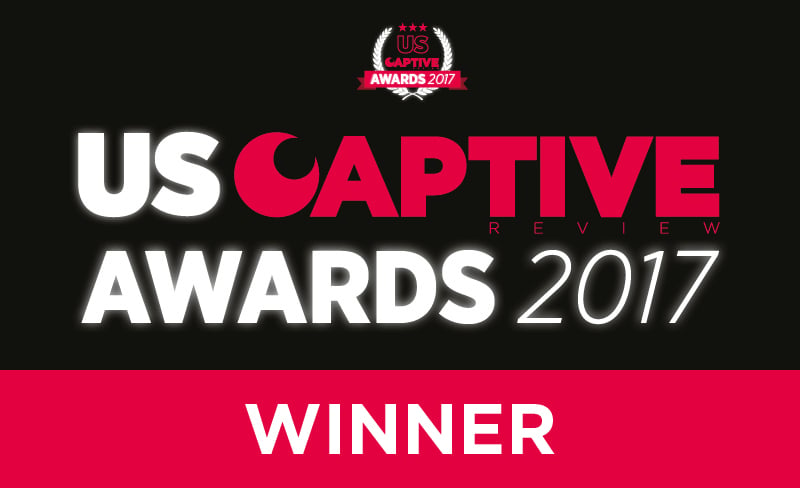Our own Adam Forstot was recently published in the January 2017 Captive Insurance Times. Read the article here or below.
U.S. Tax Reform - Returning Captive Focus to Risk?
Changes to the US Tax Code should not distract from the fact that the principles of risk financing and the use of captive insurance remain critical to any programme, says Adam Forstot of USA Risk Group.
The 831(b) election has been at the forefront of many discussions involving captives and taxes for the better part of two years. The implications for captives for the middle market and those offering non-traditional risks through pools have been well documented. With several court cases nearing conclusion (at least pending any potential appeals), the uncertainty surrounding 831(b) may soon be settled.
With all of the talk surrounding 831(b) and its impact on middlemarket captives, there has been very little discussion around the implications of changes to 831(b), or other potential changes to the US Tax Code, for the overall captive industry.
President Donald Trump and many members of the Republicancontrolled Congress have made no secret of their intent to make changes to the code tied to Trump’s highly publicised objective to keep jobs in America and encourage increasing investment in US operations. Some of the potential changes being mentioned include:
- Reform of Affordable Care Act (ACA) to include elimination of the individual mandate;
- Overall simplification of the Tax Code;
- Reduction in corporate tax rates;
- Reductions to capital gains rates;
- Reduction to the estate tax and/or increase in the exemption threshold; and
- Incentives for US companies to increase investment in US operations, which may include reduction in the corporate tax rate, tax credits and tax holidays on funds repatriated from overseas.
The changes that seem to be most frequently mentioned, aside from repeating the ACA, are reductions to the corporate tax rate and modifications to the capital gains and estate taxes. The corporate tax rate is consistently referenced in decisions by US companies to move operations offshore or go through ‘inversion’ transactions. With inversion, the legal domicile of the company is moved to a lower tax nation while the primary operations remain in the US. There have been several high-profile inversions in recent years. Some have involved countries generally recognised for their favourable corporate tax rates. Others involved countries perceived as being unattractive from a tax perspective. However, some of these countries offer a favourable tax rate relative to the US.
Accusing these companies of being unpatriotic is not going to be persuasive when they can utilise a perfectly legal technique to reduce their tax obligations. Trump has made no bones about his objective to keep companies in the US. Unless the provisions making inversion and other expatriation of assets and jobs are eliminated (another potential reform), the most attractive option, more than likely, is to reduce the US corporate tax rate.
Without getting into highly detailed economic analysis, the basic assumption would be that reducing the corporate tax rate would not only encourage companies to stay, but also increase corporate profitability while encouraging more investment in the company and/ or better returns for shareholders.
What does this have to do with captives? Potentially, quite a bit. It is a well-established principle of captive analysis that captive formation can never be only about tax. Aside from being a red flag for the Internal Revenue Service (IRS), it’s simply not a sound reason to get into the insurance business. Forming and operating a captive requires thoughtful analysis of the risk to be insured as well as the company’s tolerance for assuming risk. Focusing on tax may distract from these essential elements. As a result, a captive may be formed that may not only fail to properly address a company’s risk management needs, it may also expose the company to scrutiny by the IRS.
That stated, the tax implications of forming a captive (or any significant investment) need to be evaluated. For larger companies, the ability to finance risk in a tax-efficient manner is important. In general, premiums paid to the captive can be deducted as a business expense, and at the captive level, reserves can be deducted on an accelerated basis leading to a further benefit. At the current corporate tax rates, this can generate a significant economic benefit. In addition to tax benefits, assuming predictable risk in a captive also lowers the frictional cost by reducing and/ or eliminating the carrier overhead attached to that layer of risk (referred to as ‘dollar swapping’).
"If the captive suddenly isn’t generating the same return as other investment opportunities, does it remain viable? In most cases, the answer is probably ‘yes’."
What if the corporate tax rate is reduced to 25 percent, or perhaps to Trump’s publicly stated target of 15 percent? What happens if the capital gains rate is lowered at the same time? Will owners be more inclined to accelerate dividends out of concern that the capital gains rate will be increased again?
Most would anticipate that every corporation would conduct thorough analysis of its finances relative to a reduction in the corporate tax rate. This analysis would likely evaluate the internal rate of return on all major capital investments, including the captive. If the captive suddenly isn’t generating the same return as other investment opportunities, does it remain viable? In most cases, the answer is probably ‘yes’, but it will be critical for risk managers and other stakeholders involved with the captive to anticipate these questions and be prepared to demonstrate the value of the captive as a risk management tool outside of a traditional internal rate of return analysis.
A driving principle of captives has been ‘the four Cs’:
- Coverage: Using the captive to offer lines of business unavailable or difficult to obtain in the commercial market.
- Capacity: Using the captive to expand the limits on lines of coverage and/or to access reinsurance to offer the additional capacity.
- Cost: Using the captive to finance risk at a lower cost than with traditional coverage.
- Control: Using the captive to gain more control over key functions such as claims and underwriting.
In many instances, the capital required to support the captive may not generate the same return for a company as opening a new assembly plant. However, the captive is still likely a much better investment than buying first-dollar commercial insurance, which may generate no return. Or, if the company manufactures a complex product for which insurance is difficult to secure and costly, the ability of the captive to provide required coverage probably cannot be measured through typical financial metrics.
Issues surrounding the 831(b) election have dominated the attention on the captive industry over the last couple of years. While many large, corporate entities are far removed from this space, some of the changes to 831(b) may now be relevant. What is likely relevant to a corporate entity is the increase in the threshold from $1.2 million to $2.2 million as of 1 January 2017. Many larger corporate captives are above the previous threshold, yet a number of those captives may be beneath the new threshold, or possible, very close to it.
Companies with captives that have been paying income tax on their underwriting profits, or possibly not taking insurance company treatment for their captives, may suddenly find that the ability to make the 831(b) election and accumulate underwriting profit tax-free makes modifications to their current captive structure a more attractive use of capital.
This may apply to companies writing a variety of longer-tail casualty coverage, but may be especially true for companies with large property portfolios with high retentions for catastrophic perils, such as named storms, tornados and earthquakes. Under traditional insurance company treatment, there is little benefit to running property risk through a captive. There are a few reasons for this, including:
- Captives are generally focused on funding predictable layers of risk. Catastrophic property coverage is highly unpredictable.
- Property claims generally settle very quickly. The captive therefore will have no reserves to use in order to offset underwriting profits in a given year. Since any non-insurance company can deduct casualty losses when paid, the captive offers no cash flow or tax benefit.
These issues generate a number of challenges for companies from a budgeting and cash flow perspective. Since there is no benefit to setting aside funds or having an accrual for potential catastrophic property claims on the corporate books, companies consistently struggle with how to manage this exposure.
While the nature of the risk doesn’t change under 831(b), the way it can be treated does. By utilising 831(b), these companies can now use a captive to fund their property retentions much more efficiently. The company can use the captive to generate a tax deductible premium as a business expense. At the captive level, underwriting profits can be accumulated tax free, which offers companies that previously struggled to manage their catastrophic property risk a much more efficient means for doing so. If losses remain in check, companies can use excess surplus to increase retentions, expand coverage or return a portion of the surplus to the company for other uses.
So, if you combine the potential financial benefits along with the ability to access reinsurance capacity, a property-focused captive may become very attractive where it was previously not economically viable.
Hopefully, as the new administration and Congress settle in, we will receive clarity on their intentions regarding key tax and finance reform sooner than later. Given the actions and results in US politics over the last couple of years, that may be wishful thinking. Companies will continue to have to navigate this ever changing political landscape as it relates to potential changes to the Tax Code and other economic factors.
Despite this uncertainty, companies will need to continue to look for ways to effectively manage their risk. Changes to the Tax Code may change the climate in which this risk management takes place, but these changes should not distract from the fact that the principles of risk financing and the use of captive insurance remain critical to any effective risk management program.
It would be wise for risk managers to pay attention to potential changes that may affect the captive both positively and negatively. They will need to understand the financial metrics utilised by their companies to evaluate rates of return, the use of capital, and be sure they are able to clearly demonstrate the value of the captive. The risk management team and other stakeholders need to be able to demonstrate the qualitative and quantitative benefits of using the captive to the company decision makers relative to their internal rate of return and other financial metrics to show why the captive is a good investment.
If the captive was formed based on a solid risk management foundation and supported by a detailed feasibility study, the benefit of the captive to the organisation should already be well documented. From there, it will be a matter of articulating the importance of the captive for preserving company assets and ultimately enhancing the bottom line.
USA Risk Group does not offer tax advice. The points raised in this article are for discussion purposes only. Anyone interested in how any of these issues may impact their own captive should consult their tax/legal advisors.





